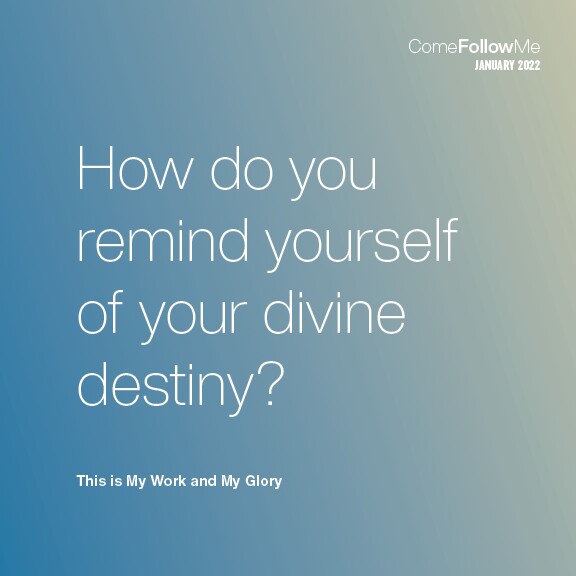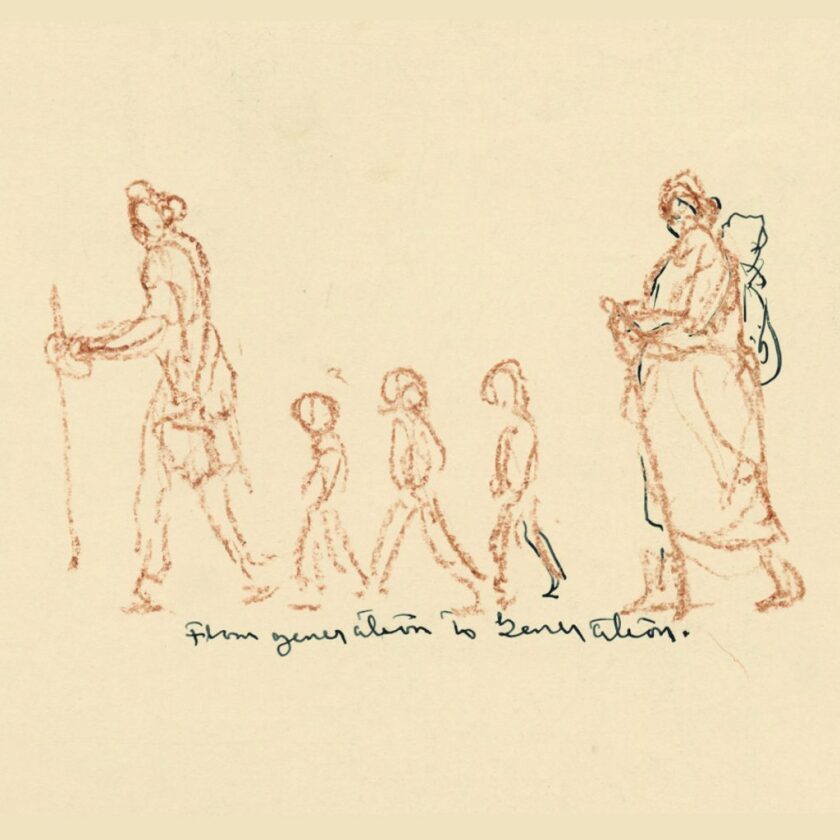

December 27 - January 2
Detail from John Hafen (1856-1910),
When I Leave This Frail Existence, 1909, gouache, 17 1/4 x 10 1/4 inches. Brigham Young University Museum of Art, gift of German Elsworth, 1940.
Hafen’s painting, based on Eliza R. Snow’s poem “O My Father,” reminds us of life’s greatest purpose: to prepare and become like our Heavenly Parents. Hafen created a series of illustrations of Snow’s celebrated poem as a potential booklet for missionary use. The aged man in this painting appears deep in thought as he contemplates the horizon and a future reunion with God. As Hafen described, “To me heaven, God, eternity, is a living … reality. I have business with my heavenly father every day of my life. These feelings have had much to do with the manner in which I have illustrated this beautiful…truthful poem.” What are some ways you can remind yourself of your divine worth and destiny?


January 3 - 9
Detail from Katsushika Hokusai (1760-1849),
Under the Wave off Kanagawa, from
Thirty-Six Views of Mount Fuji, c.1830-32, woodcut, 10 x 15 inches. Brigham Young University Museum of Art, purchase/gift of the Mahonri M. Young Estate, 1959.
In Hokusai’s famous print, imposing mountainous waves seem to threaten the small fleet of longboats at sea. How do you think it would feel to be one of the oarsmen in this print–would you be frightened and overwhelmed at nature’s power, or awe-inspired by its majesty? Sometimes, the ocean can be stormy and unpredictable, but God reminds us in Genesis that He is the ultimate creator and controller of the Earth. Where do you go to feel in awe of God’s creations?


January 10 - 16
McRay Magleby (1942-),
Myth, Literature, and the Bible, 1984, lithograph, 33 x 20 1/4 inches. Brigham Young University Museum of Art, 2016.
For centuries, Adam and Eve’s experience in Eden has been invoked as a moralizing allegory of human fallibility, but inspired scripture reveals that the Fall was an essential step in the Plan of Salvation. McRay Magleby hints at the timeless narrative with this stylized, symmetrical tree of knowledge of good and evil. The tempting serpent is coiled around the tree, poised as if ready to strike. Why is it so important to be faced with tempting choices? What can we gain from overcoming temptation?


January 17 - 23
Mahonri M. Young (1877-1957),
From Generation to Generation, no date, crayon and ink, 8 5/16 x 10 3/4 inches. Brigham Young University Museum of Art, purchase/gift of Mahonri M. Young Estate, 1959.
Adam and Eve were encouraged to teach their children to use their agency to choose good. In the Garden, they had chosen a path that would include opportunities and hardships, a path not only for them but for their descendents. In this Mahonri Young sketch, one of over 600 of his sketches done in crayon (a medium now associated with children), we see a family of five walking together. We're not shown their path or their destination, but the image and its title suggest oneness of direction and destination, with parents at the front and rear providing guidance and protection for their children. Who in your life has been an example to you of choosing good?


January 24 - 30
George S. Dibble,
Temple of Sinawava, 1953. Watercolor, 22 1/8 x 30 inches. Brigham Young University Museum of Art, gift of the estate of George Smith Dibble.
“Zion” is a Hebrew word meaning “refuge” or “sanctuary.” Pioneers in southern Utah desired to build their own sanctuary in the tops of the mountains, which is why they gave that name to Zion Canyon, now part of Zion National Park. How does Dibble’s piece make Zion look like a sanctuary? How can you build your own personal sanctuaries of faith and peace?